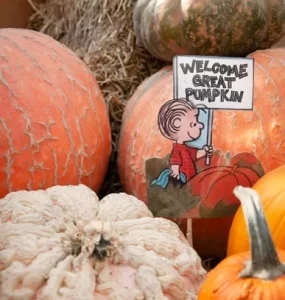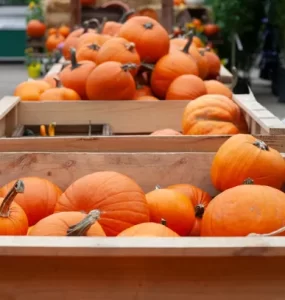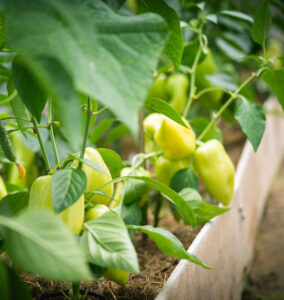Growing Tomatoes from Seed
by Rob Sproule
If you plan to grow a tomato plant this summer you’re in excellent company. 95% of vegetable gardeners in Canada grow at least one of them, which makes it our most popular food to grow.
Whether you’re going to pick them off the vine like cherries, chop them into your salads, make fresh salsa, a sandwich, or pasta sauce, I think everyone should have at least 1 tomato plant.
From Seed to Seedling
Tomatoes need to be started well before May. You can either buy started plants from a good grower or sow them yourself indoors.
Seed your tomatoes about 8 weeks before the last frost (around early March). Don’t try to get a jump on spring by starting them early. Doing so usually does more harm than good as they tend to get leggy and pale if inside too long.
Sow the seeds about 3mm deep in a moist seedling mix. Planting them into separate cells will cause less root stress later on but they don’t mind being sown all together, either.
You won’t need excess light during germination but as soon as they emerge pour as much light on them as possible. The best thing would be a growing light left on for 16 hours a day, but if you don’t have that leave them by the brightest window you have and hope for sunny March days.
If tomato seedlings don’t get enough light they stretch up looking for it and eventually fall over. This isn’t a disaster because you can transplant them deeper and roots will grow from the lower stem, but stocky plants are always healthier.
Keep the soil moist and only give diluted fertilizer very sparingly, if at all. The seedlings will grow best at about 18 degrees C, so you don’t need to worry about extra heating.
When your babies are 3-4 inches high it’s time for them to move out on their own. Transplant them carefully into small pots for their last few weeks indoors.
From Seedling to Eating
In early to mid May (weather-dependent) it’s important to spend some time “hardening off” your tomatoes so the bright sun and cold night don’t send them into shock. Put the pots under partial shelter outside in warm days but make sure to bring them in at night. The ideal place to harden them off is in a small poly greenhouse.
Wait at least a week after the last frost to plant them in the garden. As with all heat loving veggies, they will thrive in a container where their roots will be warm.
If you have an area that is sheltered from our desiccating winds it would appreciate it. Prime real estate is against a south facing wall, preferably with light coloured siding so it can sunbathe all day.
They don’t like wet feet, so if your soil doesn’t drain well (pour some on the surface and see how long it takes to drain down), add some peat moss or a similar additive. Evenly moist conditions are perfect. They are heavy feeders so fertilize them often with an all-around fertilizer.
Tomatoes will sprout roots where ever soil touches their stem, so submerge about a third of the plant if it doesn’t mean taking off too many leaves. That is always a comforting thought for people who grow them indoors from seed and they get a little stretched.
Harvesting and Uses
Vegetable gardening in Alberta is a race against time. With about 130 frost free days (it’s sad I know), we need to keep an eye on maturity dates if we ever want those tomatoes on our plates.
Most vegetables will tell you their maturity dates on the seed package or the tags. Smaller tomatoes mature faster, with Early Girl being my favourite mid-size tomato, maturing in just 52 days.
I usually steer clear of tomatoes with maturity times over 80 days (the massive Beefmaster is 80). It’s pretty heartbreaking to nurture your tomatoes until they are almost ripe just to have them freeze on you.
The best time to harvest is when the tomato is a uniform colour (usually red) and a bit soft to the touch. Never pull it off the stem; hold the fruit and cut the vine to keep an inch or two of stem.
–
Read More Articles
Keep in Touch with what’s happening at Salisbury Greenhouse

















